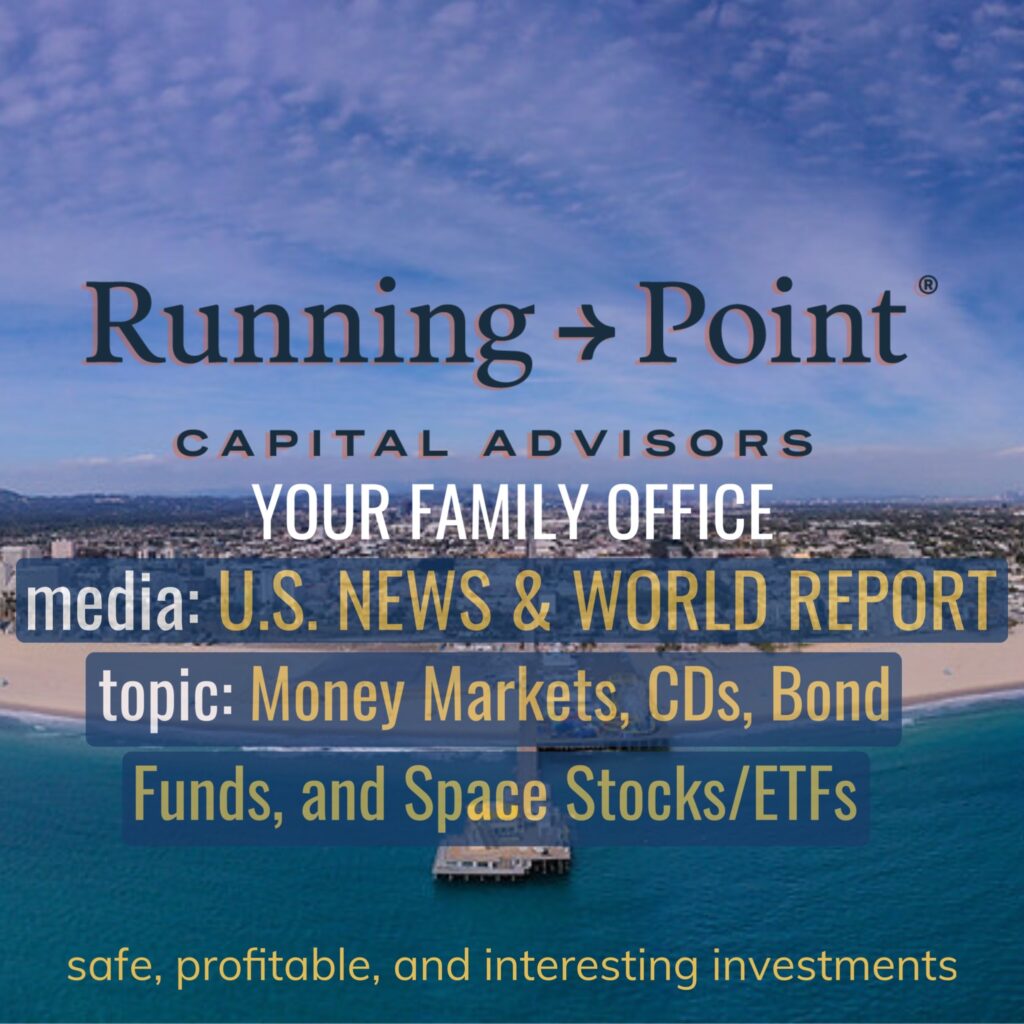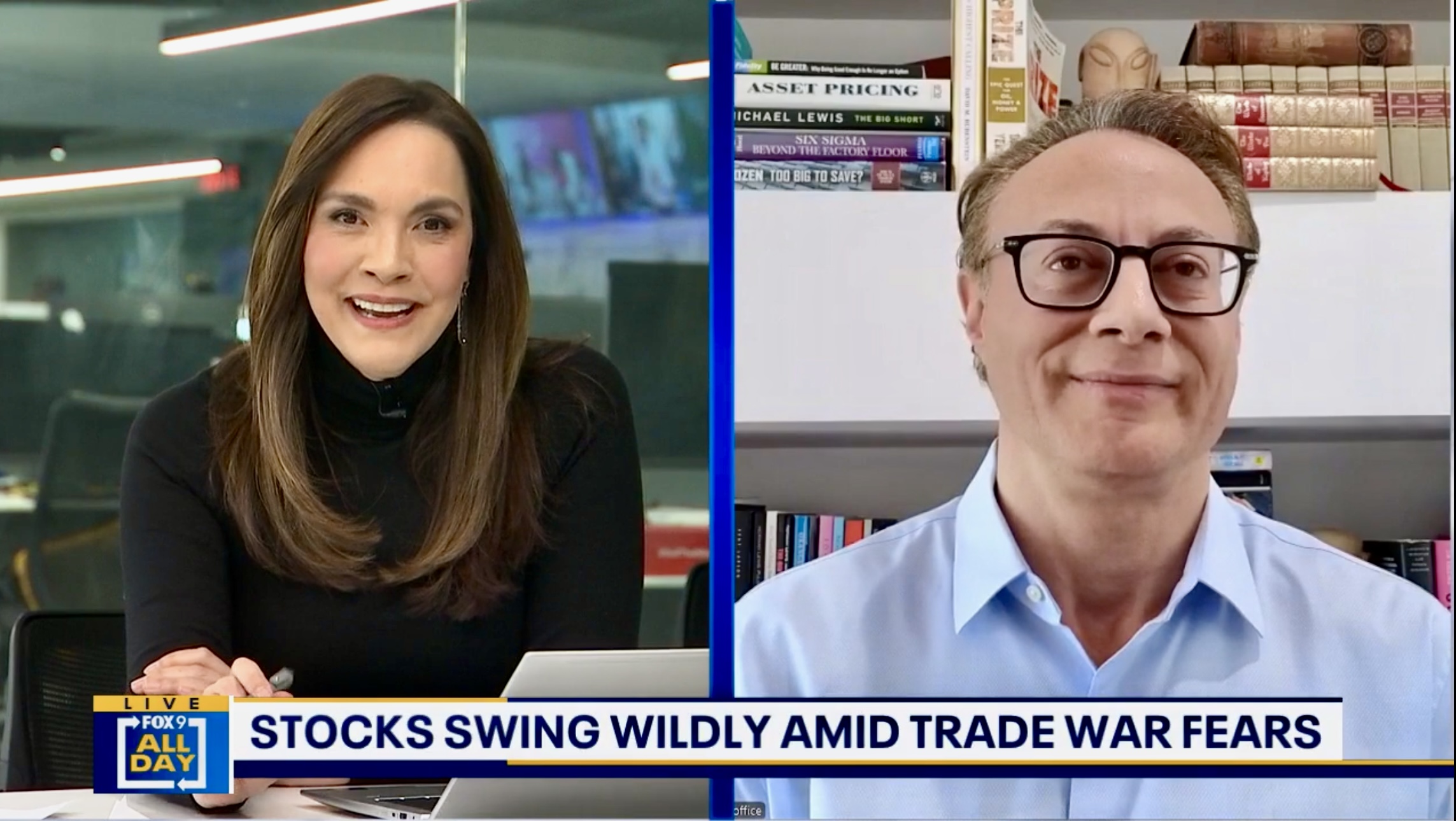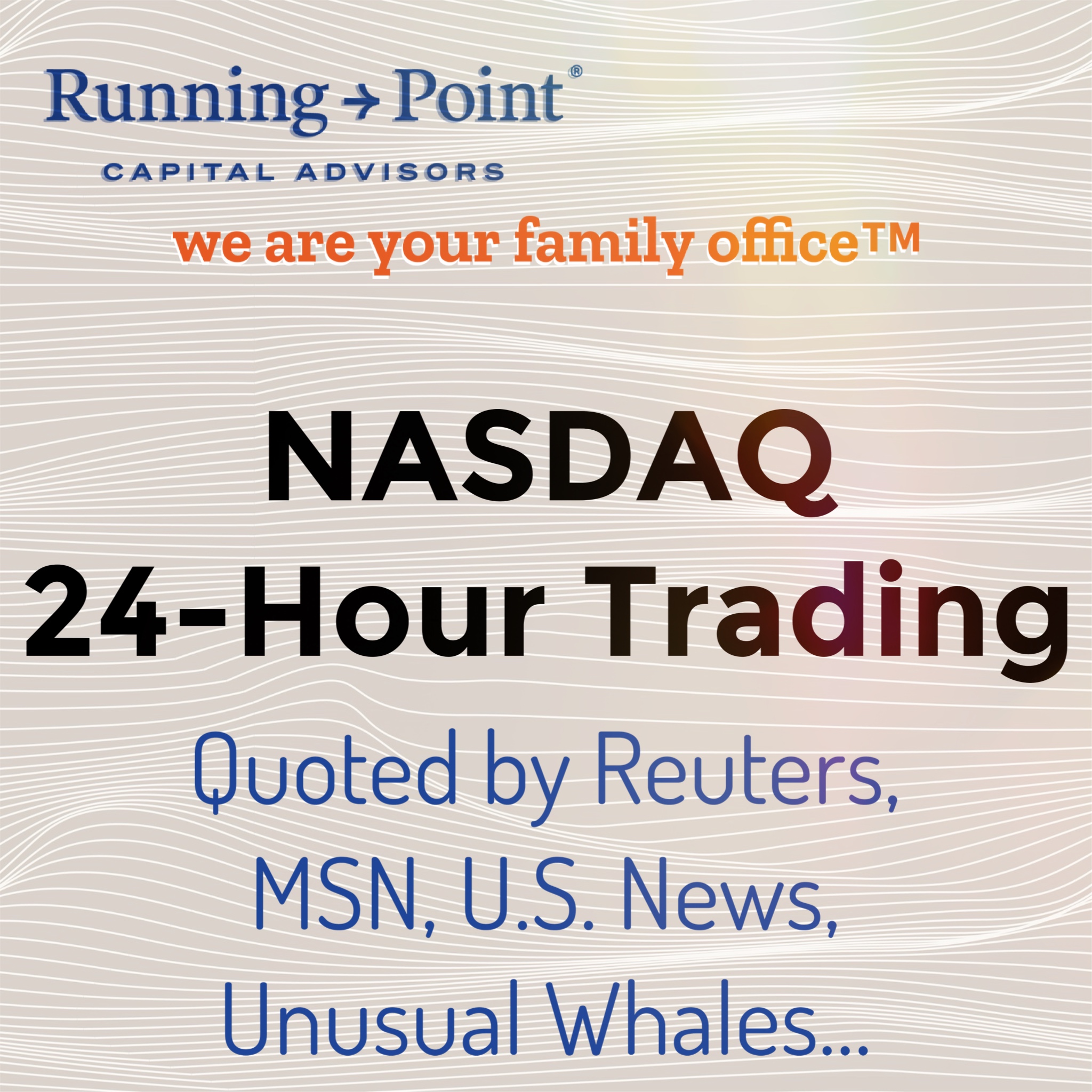Fun and Caution with Funds
Running Point and its chief investment officer, Michael Ashley Schulman, CFA, were recently quoted in four separate articles by U.S. News & World Report regarding our thoughts on money markets, certificates of deposit (CDs), bond funds, and space stocks and ETFs.
- By Casey Bond and edited by Stephanie Steinberg, “Money Market Accounts vs. CDs: What’s the Difference?”, April 27, 2023
- By Tony Dong and edited by Jordan Schultz, “7 Best Vanguard Bond Funds to Buy”, May 4, 2023
- By Tony Dong and edited by Geoffrey Smith, “7 Space Stocks and ETFs to Watch”, May 4, 2023
- By Tony Dong and edited by Geoffrey Smith, “5 Great Fixed-Income Funds to Buy for 2023”, May 5, 2023
Much as ever, people continue to seek safe, profitable, and interesting ways to invest; and as ever, seeking professional fiduciary advice can be a great benefit.
1) Money Market Accounts vs. CDs 💵
Consider your financial goals and needs when choosing between a money market account and a CD.
Bank offers and reputation: If you choose a CD, look for reputable banks, credit unions, and other financial institutions that offer CD products by researching online or visiting local branches to gather information about their CD rates, terms, and penalties for early withdrawal. Commonly, you’d look for the ones that offer the highest annual percentage yield (APY) for various maturity terms, but along with their rates you also want to do a side-by-side comparison of their account terms, minimum deposit requirement, fees, and penalties for early withdrawal. For an early withdrawal, some banks may penalize you 90 days’ simple interest for CD terms under 1 year and 180 days’ simple interest for terms longer than 1 year. In fact, Federal law requires a minimum penalty on early withdrawals from CDs, but sets no maximum penalty. Carefully review any specific account agreements and policies or ask a financial fiduciary for guidance.
Promotions and insurance limits: Some financial institutions may offer promotional rates for new customers or for a limited time; therefore check if the CD rate you are considering is a promotional rate that may change after a certain period. Additionally, if you are investing more than $250,000 in a single CD, i.e., more than the FDIC-insured (for banks) or NCUA-insured (for credit unions) limit, you need to take extra care regarding the reputation and financial stability of the bank, credit union, or other financial institution you are dealing with to ensure the safety of your investment.
CDARS: The Certificate of Deposit Account Registry Service (CDARS) can be used to work around FDIC insurance limits. A CDARS placement and custodial agreement invests money through a network of members distributing your CD holdings to various banks in order to stay below FDIC limits at each member bank. You could use this to place millions of dollars and still be FDIC protected, however you are still limited by the rules and illiquidity provisions that come with certificates of deposit (CDs).
Taxes: Also note that regardless of how long you lock up your money for in a CD, you have to pay tax on any CD interest the year it was earned. For example, on a 5-year or 10-year CD, you’ll pay taxes annually for quite some time on income that you can’t access!
Budget versus income: Deciding between a 1-year, 5- year, and a 10-year CD, or any other term, is as much a budgeting question as it is an income question.
Easy access to your funds: If you seek easy access to your money and want to be able to write checks or make withdrawals, a money market account might be a better choice. If you have a lump sum of money that you won’t need for a specific period and you’re comfortable with locking in your funds for a set term, a CD might offer a better return. However, if you are unsure on when you will need the proceeds, be aware that CDs are subject to withdrawal penalties.
Seeking advice: If you are unsure about which CD term to choose or investment to make, consider seeking advice from a multifamily office or fiduciary who can provide you with personalized recommendations based on your financial goals and risk tolerance.
For our clients: For many of our clients with large sums of cash or liquid assets we’ve recommended a portfolio of T-Bills from 1 to 6 months in maturity based on their liquidity needs. Depending on how they are laddered, the T-Bill portfolios can yield approximately 0.75% to 1.5% more than money market accounts and T-Bill income is not subject to state income tax whereas bank deposit income, bank CD income, and some of the higher yielding money market accounts that invest in short-term corporate and foreign securities are subject to state income tax. That can make a huge after-tax income difference for our wealthy clients in high tax states like California or New York.
Quoted article excerpts:
It’s important to note that if you pull out your money from a CD before the maturity date, you’ll be charged an early withdrawal fee. Some banks may penalize you 90 days worth of simple interest for CD terms under one year and 180 days worth of simple interest for terms longer than one year, according to Michael Ashley Schulman, partner and chief investment officer at Running Point Capital Advisors.
“Federal law requires a minimum penalty on early withdrawals from CDs, but sets no maximum penalty,” he says.
One of the main draws of a money market account is that you can earn more interest than with a traditional savings account, but still maintain liquidity and avoid market risk.
“If you seek easy access to your money and want to be able to write checks or make withdrawals, a money market account might be a better choice,” Schulman says.
Depositors looking for the highest interest rates available may want to consider a CD.
“If you have a lump sum of money that you won’t need for a specific period and you’re comfortable with locking in your funds for a set term, a CD might offer a better return,” Schulman says.
2) 7 Solid Vanguard Bond Funds💰
Diversification: Bond mutual funds and ETFs offer diversification by investing in a broad range of bonds issued by different corporations, governments, or entities which can help to reduce the risk of holding individual bonds and provide greater stability to the portfolio. Some funds are designed to be geographically specific domestic, international, or emerging market bond funds which can be beneficial for strategic allocation and can either increase or hone your portfolio’s diversification.
Liquidity: Mutual funds and ETFs often provide liquidity, making it easier to buy and sell allocations versus individual bonds.
Risks: It’s important to note that investing in bond mutual funds or ETFs carries risks, such as interest rate risk and credit risk; investors should carefully consider the investment objectives, risks, charges, and expenses of a mutual fund or ETF before investing or consult a financial advisor or multifamily office regarding appropriateness.
Some of the best bond ETFs have low expense ratios, prices that track close to their net asset value (NAV), very tight bid/ask (sell/buy) spreads of a penny or less, and performance that hugs closely to its benchmark. Additionally, and somewhat counterintuitively, higher priced ETFs that meet the aforementioned criteria can be a better option than low priced ETFs because each share you purchase has its own bid/ask spread. For example, buying 10 shares with a bid ask of $10.00/$10.01 will cost you 9 cents more than purchasing 1 share with a bid/ask of $100.00/$100.01; 9 cents may not seem like a huge difference, but when round trip buying and selling shares it doubles to 18 cents or 18 basis points in our example; if the ETF has an annual expense ratio of 6 basis points, than the additional bid/ask expense is equivalent to three years of fees!
Some of the better bond market mutual funds have low expense ratios, no front or back-end load costs, no 12b-1 marketing fees, performance that closely hugs their benchmark (i.e., low tracking error), and steady or consistent inflows over time. Consistent inflows can reduce turnover—the need for the bond managers to frequently buy and sell bonds—which can help tame trading costs and fees that might otherwise hamper bond returns. Additionally, depending on where or how you buy your fund, you may want to check for index funds that don’t have a transaction charge (or commission), especially if you plan to dollar cost average into the fund by periodically investing more into it or if you plan to frequently rebalance your investment portfolio.
Quoted article excerpts:
A popular “one size fits all” bond fund for many passive investors is VBTLX. “This fund provides diversified exposure to various sectors and maturities within the bond market by tracking the Bloomberg U.S. Aggregate Float Adjusted Index, which represents the broad U.S. investment-grade bond market,” says Michael Ashley Schulman, partner and chief investment officer at Running Point Capital Advisors.
On the other side of the risk-reward spectrum in terms of credit risk is VWEHX. “This fund aims to provide potentially higher income through exposure to bonds with higher credit risk by investing in lower-rated, high-yield corporate bonds,” Schulman says. “High-yield bonds, also known as junk bond funds, typically carry higher credit risk but may offer higher yields to compensate for it.”
“BNDX offers diversification benefits by including investment-grade bonds issued by governments and corporations outside the United States, and thus provides exposure to international bonds denominated in various currencies,” Schulman says. By buying BNDX, investors can hedge against the risk of a catastrophic event hitting the U.S. bond market, like a sovereign default or credit crisis.
3) 7 Space Stocks and ETFs to Watch🚀👩🏽🚀🛰
Trends and thematic investments: We often try to limit or right-size investments in trends that can face flashy headline risk and sensationalism. Nonetheless, good money can be made (and lost) on fads and themes; one needs to watch them carefully.
Thankfully, the field of space ETFs is relatively small making them easy to compare side by side: ARK Space Exploration and Innovation ETF (ARKX), iShares U.S. Aerospace & Defense ETF (ITA), Procure Space ETF (UFO), SPDR S&P Kensho Final Frontiers ETF (ROKT), and SPDR S&P Aerospace & Defense ETF (XAR).
When selecting a space ETF, try to examine not only the expense ratio or fees of the ETF but also the underlying holdings. Does the ETF contain the kind of company exposure you desire with either more risky shoot-for-the-stars names or more stable aerospace and defense firms that have space exploration and satellite divisions?
Quoted article excerpts:
“Thematic ETFs offer easy diversification, convenience and professional management, but often this comes with much higher expense ratios than basic index ETFs, as well as industry-specific risks,” says Michael Ashley Schulman, partner and chief investment officer at Running Point Capital Advisors in El Segundo, California. “The long-term trend of a theme may be in place, but it may be early in the cycle and subject to the ups and downs of fads, so consider limiting exposure to themes that can face flashy headline sensationalism.”
“When selecting a space-themed ETF, try to examine the underlying holdings,” Schulman says. “Does the ETF contain the kind of company exposure you desire with riskier, up-and-coming shoot-for-the-stars names? Or more stable aerospace and defense firms that have space exploration and satellite divisions?” The former tends to be more volatile, while the latter tends to be more stable.
4) 5 Solid Fixed-Income Funds for 2023💰
Bond funds are investment vehicles that pool money from investors to invest in a diversified portfolio of bonds. They provide an opportunity for people to efficiently gain exposure to the bond market without having to purchase individual securities and they are popular among wealth managers and retail investors due to their effectiveness, convenience, professional management, and potential for income generation. When a bond matures, it pays off in cash and those funds can be reinvested within the fund or the fund manager may choose to sell the bond before maturity and reinvest the funds into a better opportunity. It’s this constant professional portfolio attention that can add value to a bond fund.
Differentiation: Bond funds can typically be segregated by duration, credit quality, geography, and tax status. Is the duration or average maturity of the bond fund short, intermediate, long-term, or some combination of those choices? Is the credit quality of the underlying bonds high or low? Where are the bonds located; domestic or abroad? And what is the tax status of the fund; taxable like a corporate bond fund, state-tax exempt like a Treasury bond fund, or non-taxable like a municipal bond fund?
Duration or bond longevity: In terms of duration (the sensitivity of a bond’s price to changes in interest rates), bond funds are generally classified into three different types based on the average maturity of the bonds held in their portfolio: short-term, intermediate, and long-term bond funds. Short-Term Bond Funds typically hold securities that have three years or less to maturity and aim to provide stability and preserve capital, making them suitable for conservative investors. Intermediate-Term Bond Funds typically invest in bonds with maturities ranging from three to ten years and try to balance between generating income and managing interest rate risk. Long-Term Bond Funds primarily invest in bonds with maturities greater than ten years and typically offer higher income potential but are also more susceptible to interest rate fluctuations.
Creditworthiness: Bond funds may invest in bonds issued by corporations, governments, or various entities with varying creditworthiness. Investment-Grade Bond Funds are considered to have a lower risk of default, but may offer relatively lower yields. High-Yield Bond Funds, also known as junk bond funds, typically carry higher credit risk but may offer higher yields to compensate for the increased risk. Mixed or Blended Bond Funds invest in a combination of both investment-grade and high-yield bonds allowing investors to potentially benefit from a balance between income generation and credit risk.
Quoted article excerpts:
“Some of the best bond ETFs have low fees, track close to their net asset value, or NAV, very tight bid-ask spreads of a penny or less, and performance that closely hugs its benchmark,” says Michael Ashley Schulman, partner and chief investment officer at Running Point Capital Advisors in El Segundo, California.

I know the sky is not the limit because there are footprints on the moon…and I’ve made some of them.
Buzz Aldrin
Disclosure: The opinions expressed are those of Running Point Capital Advisors, LLC (Running Point) and are subject to change without notice. The opinions referenced are as of the date of publication, may be modified due to changes in the market or economic conditions, and may not necessarily come to pass. Past performance is not indicative of future results. Forward-looking statements cannot be guaranteed. Running Point is an investment adviser registered with the U.S. Securities and Exchange Commission. Registration does not imply a certain level of skill or training. More information about Running Point’s investment advisory services and fees can be found in its Form ADV Part 2, which is available upon request. RP-23-53


